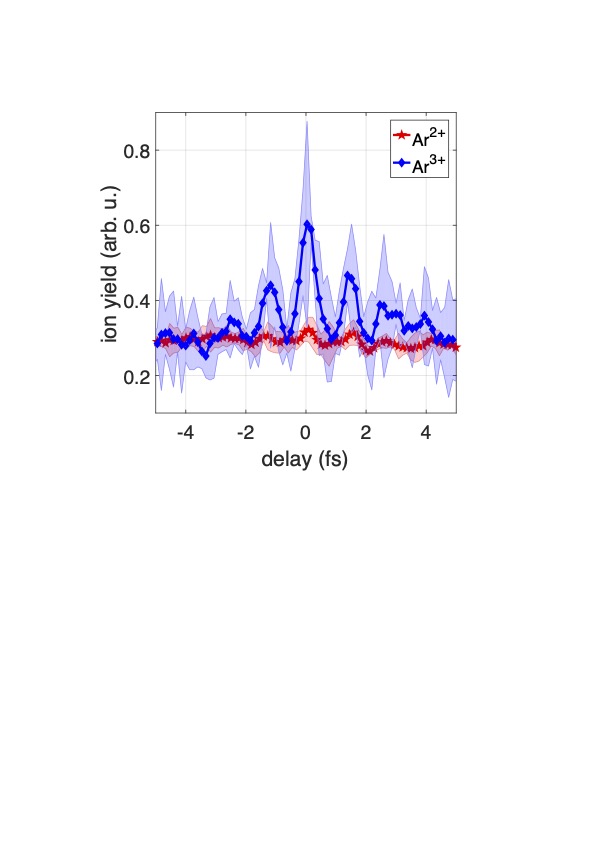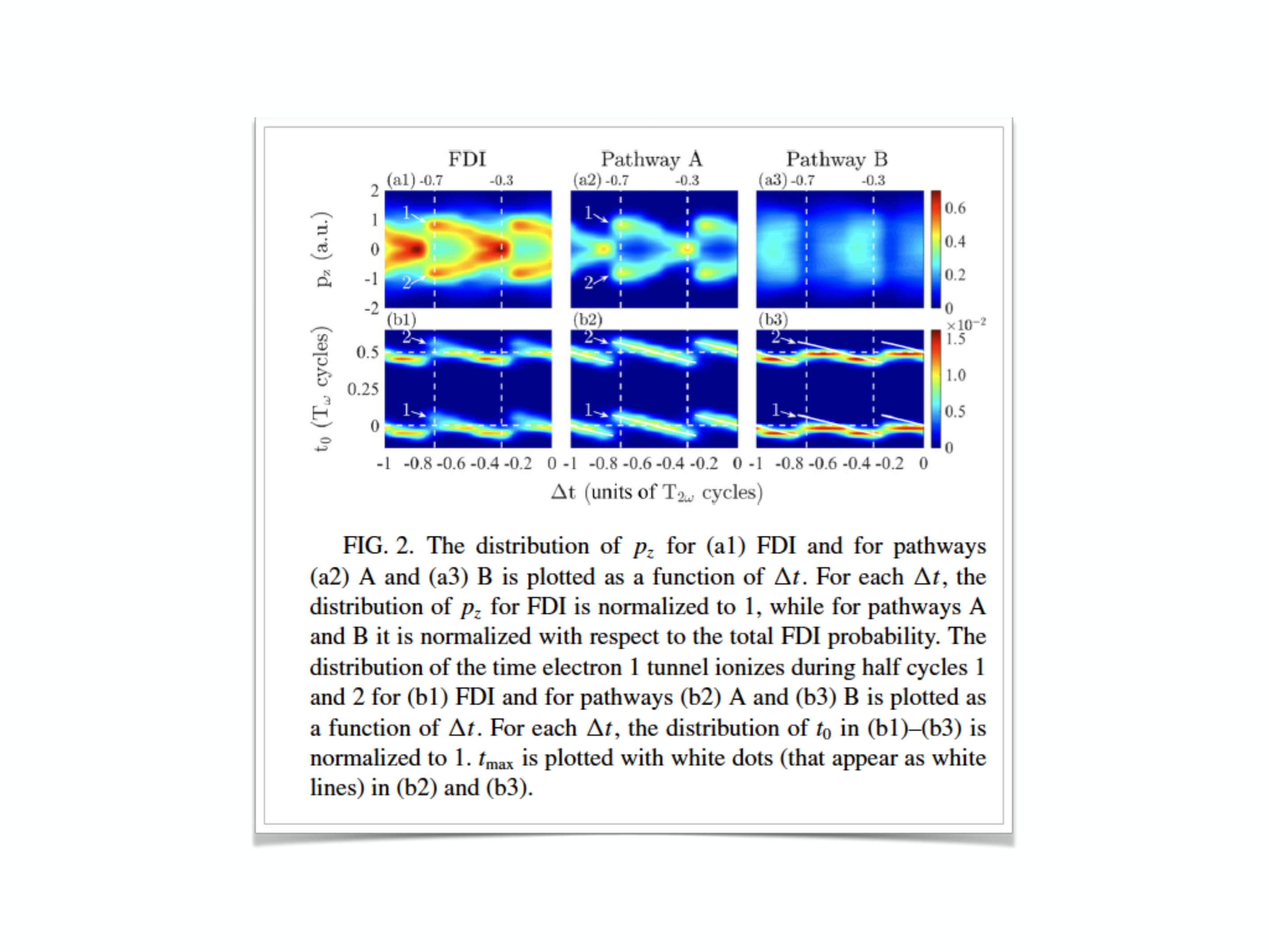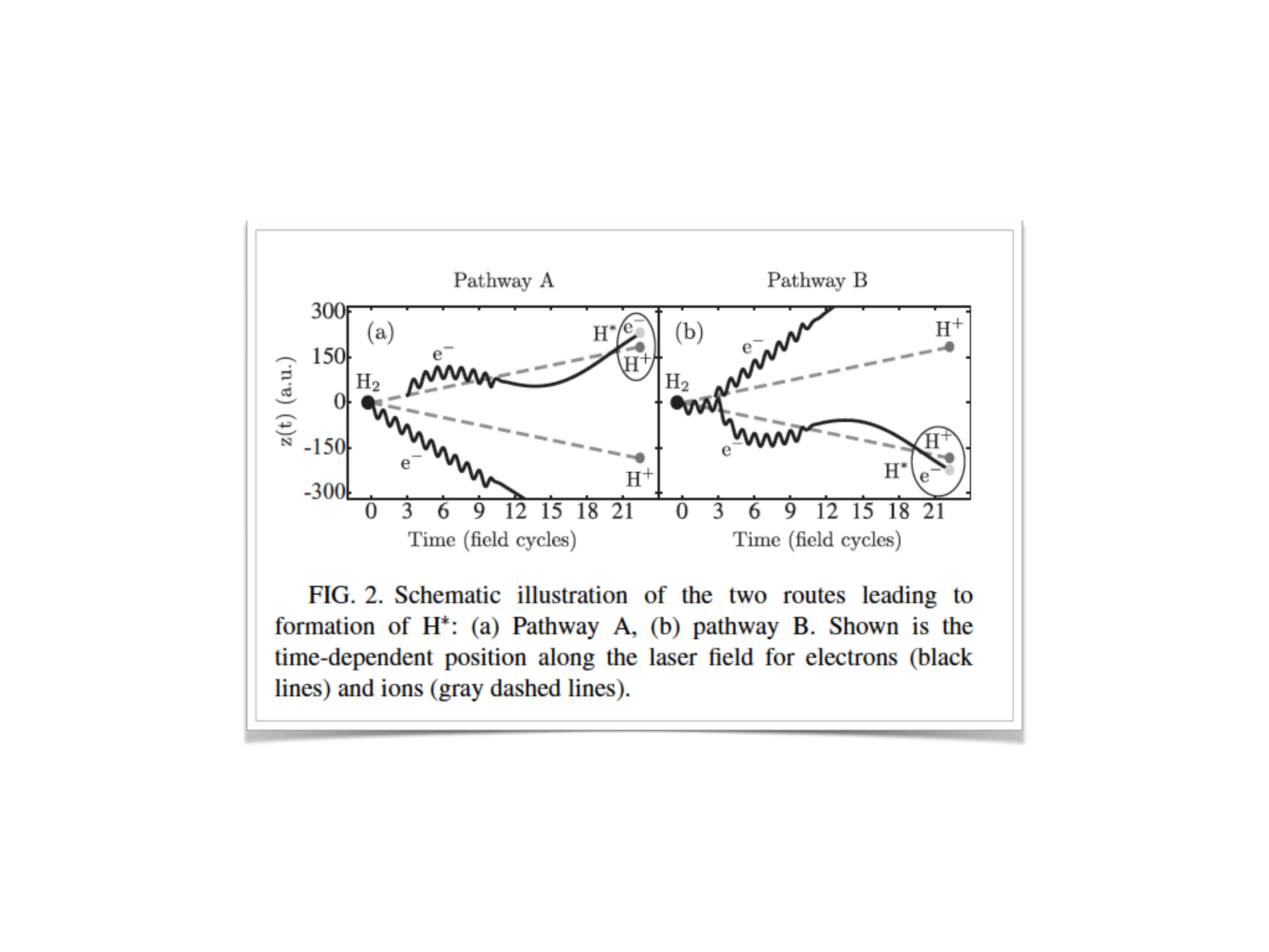We obtain continuum molecular wavefunctions for open-shell molecules in teh Hartree-Fock framework. We do so while accounting for the singlet or triplet total spin symmetry of the molecular ion, that is, of the open-shell orbital and the initial orbital where the electron ionizes from. Using these continuum wavefunctions, we obtain the dipole matrix elements for a core electron that ionizes due to single-photon absorption by a linearly polarized x-ray pulse. After ionization from the x-ray pulse, we control or streak the electron dynamics using a circularly polarized (IR) pulse. For a high-intensity IR pulse and photon energies of the x-ray pulse close to the ionization threshold of the two core orbitals, we achieve control of teh angle of escape of teh ionizing electron by varying the phase delay between the x-ray and IR pulses. For a low-intensity IR pulse, we obtain final electron momenta distributions on teh plane of the circularly polarized IR pulseand we find that many features of these distributions correspond to the angular patterns of electron escape solely due to the X-ray pulse.
Read more: Phys. Rev. A 107, 063111 (2023)., Phys. Rev. A 103, 033105 (2022)., Physical Chemistry Chemical Physics 19, 19794 (2017).
Nonsequential multielectron ionization (NSMI) in atoms driven by intense and infrared laser pulses is a fundamental process governed by electron-electron correlation. Three-dimensional (3D) quantum mechanical studies of NSDI in strongly driven atoms still remain quite challenging. Hence, it is no surprise that there are only few theoretical studies of nonsequential triple ionization (NSTI). Mostly formulated in the dipole approximation, some of these studies employ reduced dimensionality classical and quantum mechanical models. Due to the reduced dimensionality, these models do not accurately account for electron-electron interaction during triple ionization. The computational resources required for 3D quantum calculations of NSTI are currently out of reach. On the other hand, several experimental studies have addressed NSTI of driven Ne and Ar. Thus, to compare with experiments, accurate 3D semiclassical models are needed. The main challenge that classical and semiclassical models of NSMI face is unphysical autoionization. Due to the singularity in the Coulomb potential, one of the bound electrons can undergo a close encounter with the core and acquire very negative energy. This leads to the escape of another bound electron. To avoid this, some classical and semiclassical 3D models of NSTI do not fully account for the interaction of each electron with the core. That is, these models either soften the Coulomb potential or add Heisenberg potentials to mimic the Heisenberg uncertainty principle and prevent each electron from a close encounter with the core.

Instead, we develop and employ a 3D semiclassical model to study multi-electron ionization in strongly drive n Ne. Unlike other 3D classical and semiclassical models, the model we have developed fully accounts for the Coulomb interaction of each electron with the core. This is important in order to accurately describe recollisions during correlated multi-electron escape. Indeed, for strongly driven He, the finger-like structure obtained in the correlated momenta of the two ionizing electrons results from backscattering of the recolliding electron with the core. The model we have developed and use here avoids unphysical autoionization by employing effective Coulomb potentials to describe the interaction between bound electrons (ECBB). However, in ECBB the Coulomb interaction between two electrons where at least one is not bound is fully accounted for with no approximation. Unlike any previous study, in the ECBB model, we determine on the fly during time propagation whether an electron is bound or not and hence on the fly turn on or off the full Coulomb interaction between two electrons. We have demonstrated the accuracy of the ECBB model by showing that the triple ionization distributions of the sum of the final electron momenta along the direction of the electric field are in excellent agreement with experiment. Such an agreement has not been previously obtained with any other model of triple ionization.
Read more: Phys. Rev. A 105, 043102 (2022)., Phys. Rev. A 107, L041101 (2022).
Nonsequential double ionization (NSDI) in strong infrared laser fields is a fundamental process accounted for by the three-step model. First, one electron tunnel ionizes in the field-lowered Coulomb barrier and then accelerates in the laser field. This electron can return back to the core to recollide and transfer energy to a bound electron through different pathways. In the direct one, the energy transferred suffices for both electrons to ionize shortly after recollision. In the delayed pathway, the energy transferred ionizes one of the two electrons shortly after recollision. The other electron transitions to an excited state and ionizes later. It is generally accepted that recollisioninduced excitation with subsequent field ionization (RESI) prevails the delayed pathway. In RESI, the excited electron ionizes at the field extrema, after recollision, assisted by the laser field. In the double delayed pathway, both electrons ionize later, following the energy transferred during recollision.

We show that RESI does not necessarily prevail the delayed pathway, for strongly driven He at 400 nm.We find a competing mechanism in the delayed pathway where the electron that ionizes later undergoes a slingshot motion due to the Coulomb interaction with the nucleus and the field. This Coulomb slingshot motion is similar to the well-known gravitational slingshot that alters the motion of a spacecraft around a planet. Moreover, we find that the electron undergoing a slingshot motion ionizes around the second extremum of the laser field after recollision. We label this mechanism slingshot NSDI. The nucleus has a small effect on RESI. In contrast, in slingshot NSDI the nucleus plays a decisive role with anticorrelated twoelectron escape being its striking hallmark. Slingshot NSDI is an alternative to the multiple recollisions mechanism for explaining anticorrelated two-electron escape.
Read more: Phys. Rev. Lett. 121, 263203 (2018).
Multi-electron dynamics in atoms and molecules very often occur on sub- to few-femtosecond time scales. The available intensities of extreme-ultraviolet (XUV) attosecond pulses have previously allowed the time-resolved investigation of two-photon, two-electron interactions. Using fully quantum mechanical techniques to obtain photo-ionization cross sections as well as Auger rates, we study double and triple ionization of argon atoms involving the absorption of up to five XUV photons using a pair of intense attosecond pulse trains (APTs). By varying the time delay between the two APTs, we obtain information on complex nonlinear multi-photon ionization pathways. Our results show that Ar2+ is predominantly formed by a sequential two-photon process, whereas the delay dependence of the Ar3+ ion yield exhibits clear signatures of the involvement of a simultaneous two-photon absorption process. This is in agreement with experimental results. Our results suggests that it is possible to investigate multi-electron dynamics using attosecond pulses for both pumping and probing the dynamics.Moreover, our results clearly show a distinct signature of sequential versus direct processes: the former does not change as a function of time delay between the pump and probe pulse while the last does.
Read more: Optica, 9, 639 (2022)., Phys. Rev. A 98, 023426 (2018).

Frustrated double ionization (FDI) is a major process in the nonlinear response of multicenter molecules when driven by intense laser fields, accounting for roughly 10% of all ionization events. In frustrated ionization an electron first tunnel ionizes in the driving laser field. Then, due to the electric field of the laser pulse, it is recaptured by the parent ion in a Rydberg state. In FDI an electron escapes, and another one occupies a Rydberg state at the end of the laser pulse. FDI has attracted considerable interest in recent years in a number of experimental studies in the context of H2 and the triatomic molecules D3+ and H3+. In theoretical studies of strongly driven two-electron diatomic and triatomic molecules, two pathways of FDI have been identified. Electron-electron correlation is important, primarily, for one of the two pathways. It is well accepted that electron-electron correlation underlies a significant part of double ionization in strongly driven molecules, a mechanism known as nonsequential double ionization. However, electron-electron correlation in FDI has yet to be accessed experimentally.

We propose a road for future experiments to identify the important role of electron-electron correlation in FDI. We identify the parameters of orthogonally polarized two-color (OTC) laser fields that best control the relevant pathway for electron-electron correlation in FDI.We demonstrate traces of attosecond control of electron motion in space and time in two observables of FDI as a function of the time delay between the fundamental 800-nm and second-harmonic 400-nm laser fields. We show that, together, the FDI probability and the momentum of the escaping electron along the fundamental laser field bear clear signatures of the turning on and off of electron-electron correlation.
Read more: Phys. Rev. A 96, 033404 (2017).
We report a theoretical study of the mechanisms leading to the formation of highly excited H atoms (H*) during "frustrated" double ionization (since only one electron eventiually escapes) of H2 driven by intense, infrared laser fields. Specifically, we present a theoretical treatment of H* formation accounting for the motion of the two electrons and the nuclei. We show that two-electron effects are important in order to correctly account for all pathways leading to H* formation. We identify two distinctly different routes to forming H* depending on which one of the two ionization steps is "frustrated". We find that these two pathways have disctincttraces in the observable final momentum components of the escaping electron.
The pathways to H* formation can be categorized as to which one of the two ionization steps, i.e., the eralier tunnel ionization of electron 1 or the later tunnel ionization of electron 2, is "frustrated". In the Figure to the right we show pathway A where electron 1 tunnel ionizes, subsequently escaping very quickly. Electron 2, later, tunnel ionizes and quivers in the laser field;however, when the field is turned off, electron 2 does not have enough drift energy to escape and occupies a Rydberg state of the H atom instead. Hence, in pathway A the later ionization step is "frustrated".

In the Figure to the right we show pathway B where electron 1 tunnel ionizes very quickly, quivering in the field, while electron 2 tunnel ionizes and escapes after a few periods of the laser field. When the laser field is turned off, electron 1 does not have enough energy to escape and remains in a Rydberg state of the H atom instead, i.e., the eralier ionization step is "frustrated".
Read more: Phys. Rev. A 85, 011402(R) (2012).